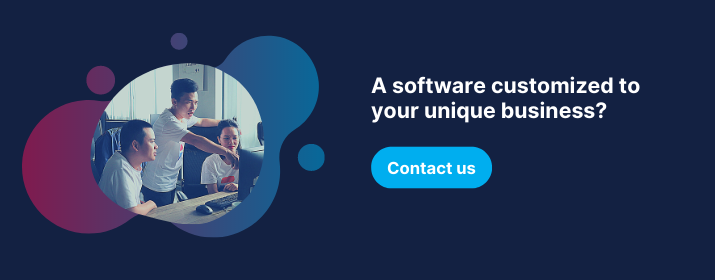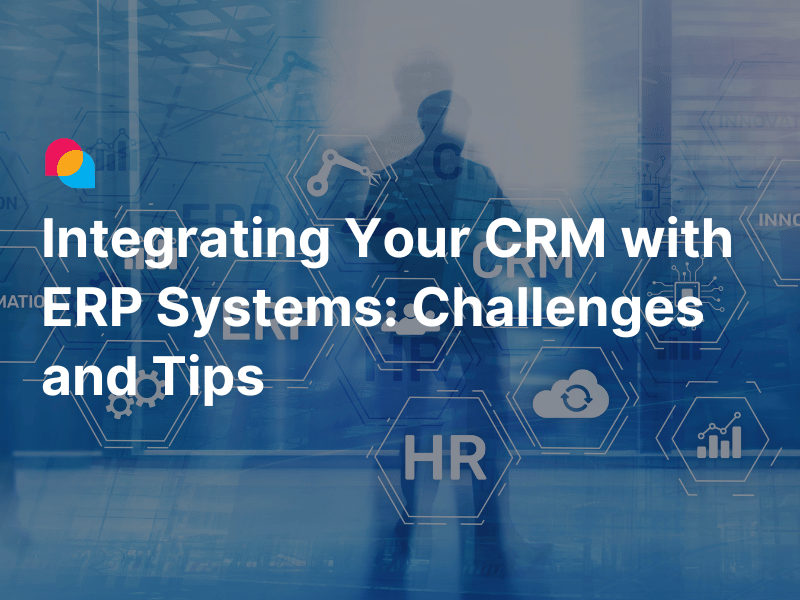During the Covid pandemic, managing manual transactions and procuring new inventory has become challenging since trade shows were shut down and in-person interactions were not facilitated. While B2B buyers are looking for platforms to help discover and purchase new products, online B2B transactions between businesses become more convenient than ever. According to Gartner, by 2023, at least 70% of enterprise marketplaces will serve B2B transactions. Similarly, iBe, a pan-European financial services advisory firm, predicted that the Worldwide B2B marketplace sales could reach an estimated $3.6 trillion by 2024. It will create a new business model and ecosystem for companies willing to make the leap. That's the reason why businesses of all sizes are investing in marketplaces to build their own Amazon-like marketplaces.
If you are interested in building a tailored B2B marketplace, this article will explore how to build a B2B marketplace platform, different types of B2B marketplaces, and their typical features. What's more, we also share the challenges and opportunities of investing in online B2B marketplaces.
Overview of the B2B Marketplace
Online B2B marketplaces allow multiple wholesalers to provide products/services to business clients. There are numerous benefits from B2B marketplaces.
For marketplace owners: The platform allows you to find out if there is a niche for a B2B product/service, learn more about the target market, implement a monetization strategy, and stand out among competitors.
For wholesalers: It helps to build their online presence, increase sales, gain access to new clients, streamline and expedite the buying process digitally, increase visibility into the market's pricing structures, test their new products/services, reduce operational costs, and implement better marketing analytics.
For buyers: They can identify the right wholesalers with reasonable price offers, acquire a great buying experience, and cater to their demands with unlimited product offerings.
For chief procurement officers (CPOs): It enables them to offload the repetitive, tactical work that dominates procurement and introduce efficiency in operations. The CPOs can strengthen their management and concentrate on more strategic activities.
Common Types of B2B Marketplaces
We can distinguish different B2B marketplaces based on business type (product/service offered) or the business model.
Based on the products and services supplied, we can categorize the B2B marketplace into two following types:
- Vertical B2B marketplace platforms specialize in a specific niche or sell products to particular wholesalers, such as textile, automotive, chemical, etc. ChemPoint (chemical), Federal-Mogul (automotive), Foursource (textile), Joor (fashion apparel), and Toursworld (B2B travel marketplace) are some common examples.
- Horizontal B2B marketplaces connect businesses across various segments and a diverse range of products and services (from household items to industry-grade products). The most popular horizontal B2B marketplaces examples are Amazon Business, IndiaMART, Udaan, etc.
Depending on the business model, we can further classify B2B marketplaces into three types:
- B2B product marketplaces connect different businesses to offer commodities like office supplies, furniture/equipment, and packaging. For example, on eBay, Amazon Business, ThomasNet, Alibaba, and Global Source, buyers can find almost any kind of product.
- B2B service marketplaces help businesses fix their pain points by offering them the required services, including talent hiring, beauty service, content creation, event management, food catering, etc. Toptal and Upwork are well-known examples of B2B services marketplaces that help organizations hire the most skilled professionals globally.
- Hybrid marketplaces are complex networks involving B2B and other business models related to products, services, B2C, and C2C elements. It helps cater to other businesses and also sells directly to retail clients. For example, Amazon and Alibaba are both B2B and B2C product marketplaces. Besides, eBay is a sample of a hybrid marketplace that combines B2B, B2C, and the C2C product-based business model.
Typical features of a B2B marketplace
The efficient online B2B marketplace software offers you a set of features that lets you customize it to meet your requirements. Below are the main groups of B2B marketplace features.
- Platform management
| Basic features |
|
A user-friendly and intuitive admin panel enables you to configure the platform, manage its experience, and handle all processes. You can use a vendor dashboard to administer activities, such as collecting user data, managing all third-party integrations, and accessing all performance statistics.
- Product/service catalog
| Basic features | Advanced features |
|
|
Wholesalers can utilize a product listing to upload product catalogs, including full product information: a description, specifications, price, quantity available, minimum size order, and so on. The search and filter feature lets users narrow the search results on your marketplace with convenient filter navigation. You can manage several offerings at once via a sub-feature - Bulk product management.
Two advanced features you can add to your full-fledged product. First, import and export functionality helps wholesalers import their product and service data from other platforms (e.g., CRM systems) or export information they need in a CSV file. Second, product comparison allows buyers to compare products side by side according to their characteristics and make a final decision in procurement.
- Payments, purchases, and monetization
| Basic features | Advanced features |
|
|
Payment management is a critical feature for automating the payment process. What's more, payment security is also crucial because of the high average order value (AOV) in B2B marketplaces, often in thousands of dollars. Paper checks, ACH transfers, electronic fund transfers (wires), and credit/debit cards are the most popular payment options for B2B marketplaces. Currently, digital payment solutions are quickly gaining, and you integrate the platform with a payment gateway like Stripe to ensure money can be safely, quickly sent, and received.
B2B pricing and discounts logic differ from that of B2C. As a result, you need to ensure that your pricing algorithms work perfectly, from order size, quantity, urgency, and shipment to individual discounts. However, like online B2C marketplaces, B2B marketplaces also offer users a product cart to buy many products at once.
Depending on how your marketplace makes money, you may customize subscription rules and pricing methods using a monetization module.
Besides, some advanced features facilitate the purchase process for buyers and help wholesalers increase sales:
- Tax management is helpful since tax rates vary for different product and service categories in different regions.
- The installment payment lets users set up a payment plan arranged between the buyer and the wholesaler.
- One-page checkout streamlines the checkout process, so users don't need to go through a lengthy step-by-step purchase journey.
- A multi-currency system enables users to utilize multiple currencies and set up currency exchange values from the admin panel.
- Inventory, logistics, and shipment (for B2B product marketplaces)
| Basic features | Advanced features |
|
|
Wholesalers may use real-time inventory management to automatically track product inventories and load more stock in their inventory. Shipment management enables both you and wholesalers to compile, set up, and manage a list of delivery providers. Order management enables merchants to customize shipping settings and calculate shipping rates, while buyers can view order details and manage their purchases. Furthermore, two advanced features are shipment tracking which lets buyers track their order statuses, and a shipment calculator that can help them determine shipping charges at checkout.
- Invoice and report system
| Basic features |
|
Incorporating a real-time report feature allows wholesalers to quickly check information about active, pending, and canceled orders and view order details to analyze statistics, report total revenues, and forecast sales. And one other feature is automated invoice processing which helps quickly process product invoices and fetch necessary data.
- Security and data protection
| Basic features | Advanced features |
|
|
Database backups save marketplace data at a predefined frequency. Therefore, you can quickly recover data if it's lost due to technical issues or human error. A data log is also an additional feature for tracking any changes made to your marketplace. It means admins can see who and when modifications are made on the platform. This enables you to deal with unexpected situations, such as security breaches, performance issues, and system defects. More importantly, you can protect your marketplace by using site HTTPS, SSL, and a secure payment gateway.
- User management
| Basic features |
|
There are many roles in every B2B marketplace, like owner, admin, super admin, and users. Team management functionality allows assigning roles to specific users – whether you or wholesaler admins. Since then, you can give them corresponding permissions within the system.
Vendor management and buyer management feature modules can be used by those with higher levels of access and responsibility (e.g., marketplace admins) to activate or deactivate firms or particular users if they breach regulations or for other reasons.
Client groups, which may be defined based on geographic region, user preferences, order volume, and other factors, are the fundamental user management tool on your side. This allows you to personalize your shopping cart and offer the unique price option described.
- Account management
| Basic features | Advanced features |
|
|
Users in each role can easily set up and manage their accounts and profiles. They can view and edit their personal information upon logging into the platform. In most B2B marketplaces, signing in is required to browse the platform. Piracy and unlicensed reproduction are complex realities of the world we live in today, like it or not. Wiser Market, a brand protection agency, reported in the summer of 2020 that counterfeit items on B2B marketplaces were increasing during Covid-19. As a result, you often require a restricted-access feature that includes controlling and curating access, so only those with permission can shop.
An email or phone number is required to use a B2B marketplace platform. Google and Apple sign-in are advanced features allow users to access the marketplace via their Google or Apple accounts.
- Content management
| Basic features | Advanced features |
|
|
The first feature of content management is the publishing tool. It helps users add, edit, or delete any content. In addition, wholesalers can utilize an image and video tool to include photos and videos in product descriptions. After the procurement, clients can share photos with them and provide feedback on ratings and reviews. This will help build trust between wholesalers and buyers. Also, integration with YouTube is an advanced feature that lets users use URLs from YouTube so that they can add to a product description.
- Communication
| Basic features | Advanced features |
|
|
In B2B marketplaces, you can set up and manage a messaging center, enabling administrators, wholesalers, and buyers to exchange messages. Additionally, wholesalers can connect with their clients seamlessly in real-time via live chats to clarify their procurement details. And chatbot is a more advanced tool that can automate communication between wholesalers and buyers by responding to frequent client queries.
Read also: How to create real-time chat applications using WebSocket APIs in API Gateway.
How to start your B2B marketplace development
There are some critical steps to building your own B2B marketplace.
Step 1: Identify a market need.
The starting point will be identifying a market need and businesses’ pain points. Since then, you can suggest a solution for a real problem that someone else has not yet resolved.
Step 2: Find the B2B marketplace partner.
Building a B2B marketplace business can take one of two routes:
- Go with the best B2B marketplace solutions to build the wholesale marketplace quickly. For example, Sharetribe, Mirakl, Arcardier, Oro, Magento, Spryker, etc.
- Build the marketplace website from scratch by hiring an experienced IT team.
Read also: How to choose the best-fit marketplace development approach to your situation.
Step 3: Launch your Minimum Viable Product (MVP).
The MVP is a bare-bones version of your marketplace that delivers core features to ship it to the market early. It allows you to reduce time, save money, validate the hypotheses quickly, and gain valuable feedback from early adopters.
Read also: How to build an efficient Minimum Viable Product (MVP) for startups.
Step 4: Find your product/market fit.
With the MVP live, you'll see whether your idea resonates with the market. You'll also define what features are critical, most wanted, and less wanted. Since then, you can narrow your focus to providing a full-fledged product that achieves product/market fit.
Step 5: Add specialty features.
After building your products with crucial features, you can add advanced features to create unique selling points, improve the user experience, and boost revenues.
The challenges and opportunities in the B2B marketplaces
There are several challenges and opportunities that are worth taking a look at when building the b2b marketplace. This way, you increase your chances of standing out from the market competitors and building a profitable business.
B2B marketplace challenges
- Develop long-term client relationships with trust.
One of the biggest challenges of the B2B marketplace is maintaining and nurturing customer relationships in a digital age. In B2B, trust between supply partners can take years to build, and deals often take place through long-standing relationships and invisible networks. Especially when B2B transactions are high value, they can include relatively high risks for the responsible individual and the organization. Given that, as an online B2B marketplace platform owner, you need to find and connect with reliable wholesalers in your marketplace. In other words, you need to define your ideal wholesale supplier profile, evaluate thorough prospective wholesalers, and manage their quality control. - Manage data and cybersecurity.
Another B2B marketplace challenge is data storage and cybersecurity. Your business has to store a wide range of data to serve clients efficiently, including clients’ names, contact information, order history, and payment methods. You can keep your data safe by applying cybersecurity measures for your B2B marketplace, like using a firewall, educating all employees, enforcing safe password practices, regularly backing up all data, installing anti-malware software, documenting your cybersecurity policies, using multifactor identification, and applying for marketplace's compliance programs and certifications, like ISO/IEC 27001 Information Security Management System (ISMS), ISO/IEC 27018 Protection of Personally Identifiable Information (PII), Payment Card Industry Data Security Standard (PCI DSS), The Service Organization Control (SOC) 2 Type II, CSA STAR Certification, CSA Trusted Cloud Provider, etc. - Handle complex transactions.
Compared to B2C retailers, B2B clients experience more complex challenges when making transactions. These sale cycles may be many times longer, involve more decisions makers, and go through a lengthy process from an RFP to negotiation, proposal, and contract. In order to meet clients’ expectations, you need to address their needs within your online B2B marketplace platform while providing clients with personalized, smart, and easy-to-use procurement.
B2B marketplace opportunities
- Shift B2B buyer habits.
B2B clients today don't expect to interact with a salesperson until it's time to close the deal. More significantly, they want the same digital experiences and features that they encounter as B2C consumers. Since then, individuals can quickly turn to powerful procurement platforms when making purchases as representatives of a business. - Penetrate highly fragmented markets.
In a highly fragmented industry, marketplaces are great at aggregating products or services, facilitating easy comparison, and providing buyers with ready access to the highest quality - and most reliable operators. This could make finding a B2B provider easier in terms of size, quality, and product focus. It also brings transparency and efficiency to the transactions. - Create the need to go mobile.
B2B buyers are becoming more technologically savvy, increasing the use of mobile for work and multitasking across multiple screens. Mobile-friendly B2B marketplaces will likely gain an advantage over their competitors in the near future. In other words, creating a seamless mobile user experience (UX) for B2B marketplaces is critical. - Offer a seamless transaction procedure.
Due to the complexity of the transactions, B2B marketplaces need to offer a comprehensive solution to streamline and automate the process. B2B buyers can transact on a digital platform that helps them save the time, effort, and cost spent on sourcing and procuring inventory for merchants. - Remain the blue ocean.
As a rule, new customer-oriented marketplaces are already aware of their rivals. They tend to cure existing platforms like Amazon or eBay marketplace to discover creative ways to improve their offering. It paves the way for them to get the upper hand. When they define an unoccupied niche or so-called blue ocean, they can develop a unique solution to a chicken and egg problem. Consequently, they get better chances of gaining a competitive edge in building network effects.
Read also:
- How to build an online marketplace platform
- How to choose the right revenue model for a sustainable marketplace platform
Final thoughts,
Building an online B2B marketplace seems not an easy task. The Covid-19 pandemic has accelerated online marketplace adoption among businesses, forcing B2B buyers and sellers to go digital to stay competitive. Even B2B buyers in stable traditional markets are now more willing to change suppliers because of superior online B2B marketplace experiences. The year 2022 represents a remarkable opportunity to build your own marketplace.
I hope the basic information in this article will help you kick off your journey with the online marketplace and grow your business.





